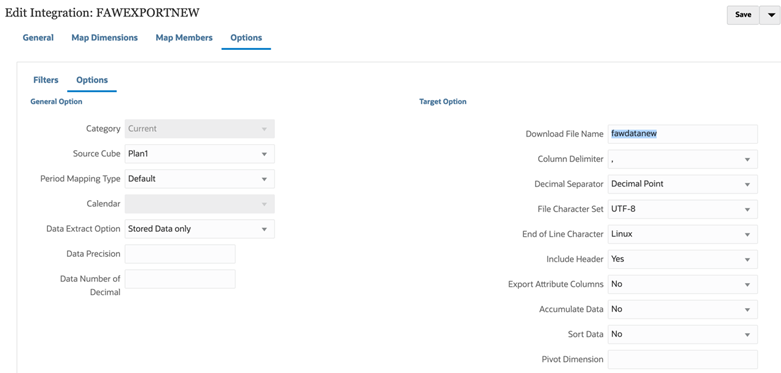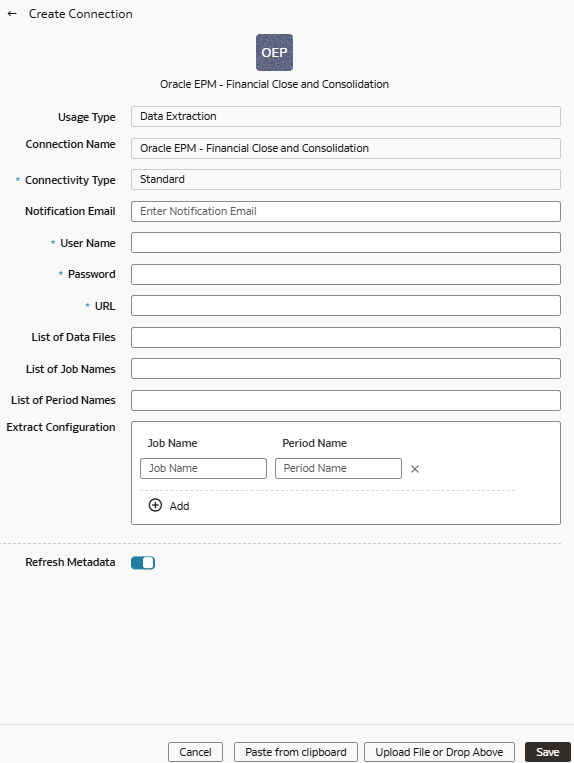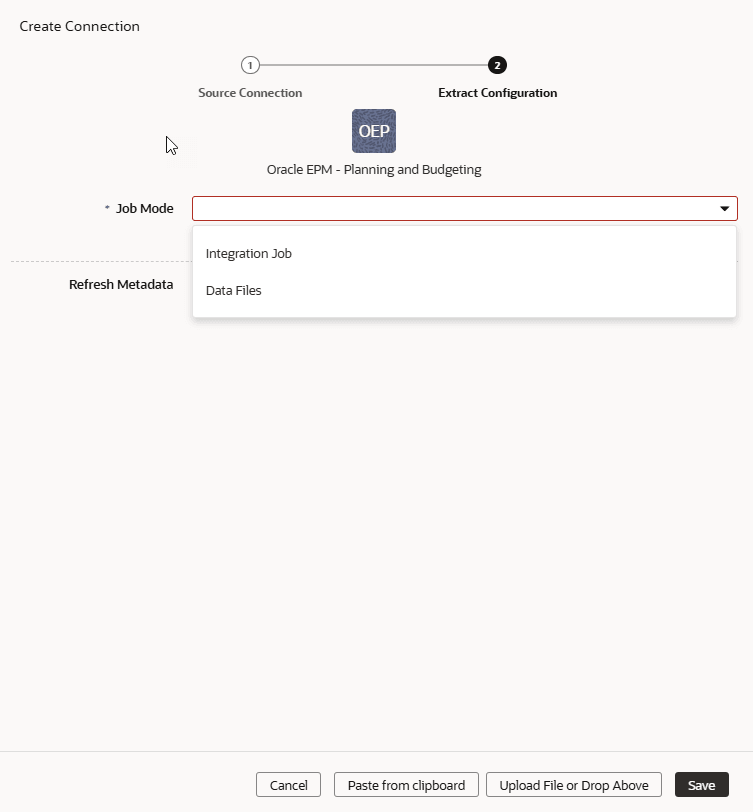Load Data from Oracle Enterprise Performance Management into NetSuite Analytics Warehouse (Preview)
As a service administrator, you can use the NetSuite Analytics Warehouse extract service to acquire data from the Enterprise Performance Management (EPM) SaaS instance and use it to create data augmentations for various Enterprise Resource Planning and Supply Chain Management use cases.
You can connect to these functional modules of EPM:
- Financial Close and Consolidation (FCCS)
- Planning and Budgeting (PBCS)
- Profitability and Cost Management (PCMCS)
If you've pivot table in your source, then the metadata extract supports pivot table metadata extraction for the EPM connectors. You can only manually extract the incremental data because, for incremental extraction, you must update the results file in EPM before starting the next extraction for the updated data. Update the results file by running the integration using Data Exchange and then access the new results file from the EPM connector in NetSuite Analytics
Warehouse. Ensure that you enter all the fields in accordance with your EPM nomenclature and specifics. For example, if you have defined Period in your EPM job as {June-23}, then include exactly the same in the Create Connection for the EPM source dialog.
Note:
The EPM connectors display the default datatype and size; you must edit these values as applicable while creating data augmentations.Depending on the functional module you want to connect to, ensure that the applicable feature is enabled on the Enable Features page prior to creating this connection:
- Oracle EPM - Financial Close and Consolidation
- Oracle EPM - Planning and Budgeting
- Oracle EPM - Profitability and Cost Management



